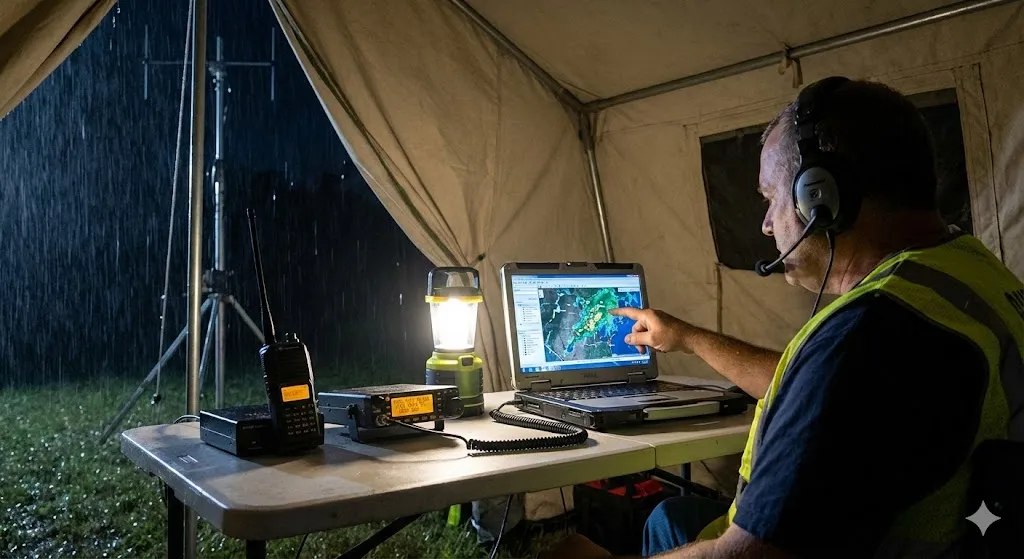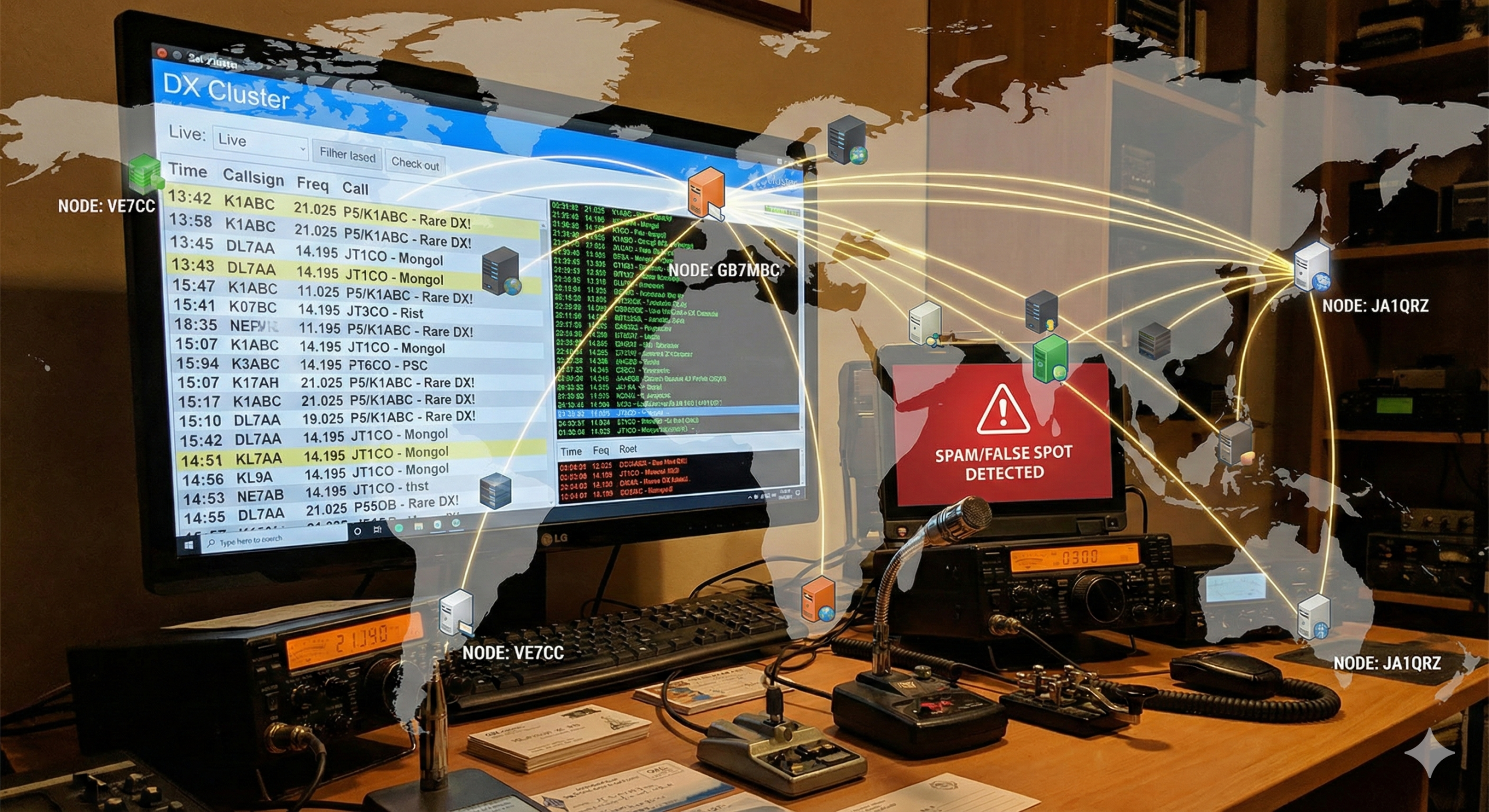Exploring Amateur Radio and Radio over Internet Protocol (RoIP)
Amateur radio, also known as ham radio, has a long and storied history of connecting people across vast distances. In recent years, Radio over Internet Protocol (RoIP) has revolutionized amateur radio by integrating internet technology, enhancing communication capabilities, and expanding the reach of radio enthusiasts. This blog post delves into the history of amateur radio, the advent and advantages of RoIP, its various usages, and the software and hardware that make it all possible.
The History of Amateur Radio
Amateur radio dates back to the late 19th and early 20th centuries, shortly after the discovery of radio waves. Early pioneers like Guglielmo Marconi and Nikola Tesla laid the groundwork for radio communication. By the 1910s, amateur radio operators, known as “hams,” began experimenting with wireless communication.
In the ensuing decades, amateur radio became a popular hobby, providing a platform for enthusiasts to communicate, experiment with radio technology, and offer emergency communication services during disasters. The establishment of the International Amateur Radio Union (IARU) in 1925 helped standardize practices and regulations, further promoting the growth of the amateur radio community.
The Emergence of Radio over Internet Protocol (RoIP)
The advent of the internet brought significant changes to many fields, and amateur radio was no exception. Radio over Internet Protocol (RoIP) emerged as a technology that leverages the internet to transmit radio signals, similar to how Voice over Internet Protocol (VoIP) transmits voice communication.
RoIP allows radio signals to be transmitted over the internet, enabling operators to connect radios across the globe without the limitations of traditional radio frequency (RF) propagation. This has expanded the reach and capabilities of amateur radio, making it more accessible and versatile.
Usages of RoIP in Amateur Radio
RoIP offers a range of benefits and applications for amateur radio enthusiasts:
- Extended Reach: RoIP enables communication between operators in different parts of the world, regardless of distance or RF conditions. This is particularly useful for international contacts and emergency communication.
- Interoperability: RoIP allows different radio systems and networks to interconnect, facilitating communication between disparate systems and enhancing coordination during emergencies.
- Remote Operation: Operators can control and use their radios remotely via the internet, providing flexibility and convenience. This is especially beneficial for those who may not have access to a suitable location for an antenna setup.
- Enhanced Features: RoIP systems often come with additional features such as digital signal processing, encryption, and integration with other communication technologies, enhancing the overall communication experience.
Software for RoIP: Clients and Servers
Effective RoIP communication relies on specialized software that acts as clients and servers to manage and route radio signals over the internet. Some popular software solutions include:
Client Software
- EchoLink: EchoLink allows licensed amateur radio operators to communicate with each other using VoIP technology. It connects amateur radio stations to the internet, facilitating global communication.
- Zello: Although originally designed as a push-to-talk (PTT) app, Zello is widely used in the amateur radio community for RoIP. It provides a simple interface for voice communication over the internet.
- HamSphere: HamSphere simulates HF radio communications over the internet, allowing operators to experience realistic radio conditions and propagation.
Server Software
- AllStar Link: AllStar Link is an open-source project that uses the Asterisk PBX software to create a network of linked amateur radio repeaters, nodes, and remote base stations. It provides robust and flexible communication solutions for amateur radio operators.
- SvxLink: SvxLink is a versatile server software that supports various types of communication, including simplex links, repeaters, and remote control of transceivers. It is highly configurable and supports multiple languages.
Hardware for RoIP
RoIP systems often require specific hardware to interface traditional radios with the internet. Key hardware components include:
- Radio Interfaces: Devices such as the SignaLink USB by Tigertronics and RigBlaster by West Mountain Radio allow traditional radios to connect to computers for digital and RoIP communications.
- Networked Radios: Modern radios, such as the Icom IC-9700 and Yaesu FT-991A, come with built-in networking capabilities, allowing direct internet connectivity without the need for additional interfaces.
- Microcontrollers and SBCs: Single-board computers (SBCs) like the Raspberry Pi and microcontrollers like the Arduino are commonly used to build custom RoIP solutions. These devices can run server software and manage connections between radios and the internet.
Conclusion
The integration of Radio over Internet Protocol (RoIP) with amateur radio has significantly enhanced the capabilities and reach of this beloved hobby. By combining the timeless appeal of radio communication with the power of the internet, RoIP has opened new horizons for amateur radio operators. Whether through extended reach, remote operation, or enhanced interoperability, RoIP continues to evolve and enrich the amateur radio experience. With the right software and hardware, hams can now connect, experiment, and communicate like never before, keeping the spirit of amateur radio alive in the digital age.







Post Comment